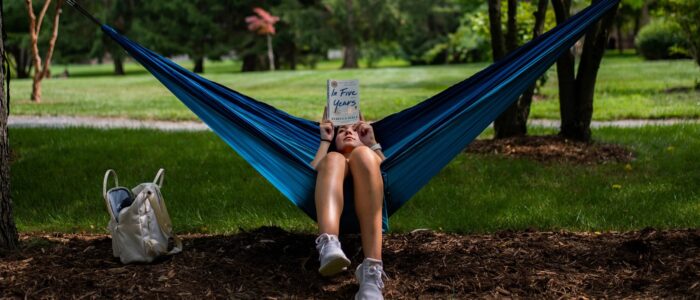“We wish to suggest a structure
for the salt of deoxyribose nucleic acid (DNA).”
James Watson | “Nature”, April 1953
Finance & Administration: Facilities


“We wish to suggest a structure
for the salt of deoxyribose nucleic acid (DNA).”
James Watson | “Nature”, April 1953
Finance & Administration: Facilities

Ohio K-12 Facilities Construction Commission | Map of K-12 Schools
Financial Statement: Net Position $176.3M | 25 Year Master Plan
Grits are made from dried corn ground into coarse or fine particles. The corn kernels are treated to remove the hull, resulting in hominy, which is then dried and milled into grits. To prepare, the grits are simmered in water, milk, or broth until soft and creamy.
They are served hot with butter, salt, or cheese. Sweet versions might include sugar or honey. In the Southern U.S., grits are sometimes paired with eggs, bacon, sausage, or shrimp for a hearty start to the day.
The Corn Refiners Association and the U.S. Food and Drug Administration provide guidelines for defining and labeling grits:
While variations exist, Southern-style grits generally follow these principles.
Thank you to Chef Phil Wingo for being with us this week to teach our students all about BBQ!#nichollsculinary #cjfci #guestchef #bbq #weknowfood pic.twitter.com/yHGzgL9Ul1
— Chef John Folse Culinary Institute (@NichollsCJFCI) February 18, 2020
One of the best traditions on campus. Crawfish Day 2025 was full of food, music, and good times🦞Thanks to SPA for another great year! #CrawfishDay #GeauxColonels pic.twitter.com/RFIxlMzswq
— Nicholls State University (@NichollsState) April 11, 2025
Grand Valley State University Statement of Financial Position 2023: $1.057B









Located 15 minutes from Traverse City, this Laker alum and his family are celebrating their 10th season at Rove Winery this summer! 🍷🍇 Read about Creighton Gallagher ’06 and his journey to the vineyard here: https://t.co/lJ0eYlL7z7 pic.twitter.com/iAXWXRuglO
— Grand Valley State (@GVSU) August 6, 2025
This content is accessible to paid subscribers. To view it please enter your password below or send mike@standardsmichigan.com a request for subscription details.
“The morning cup of coffee has an exhilaration about it
which the cheering influence of the afternoon or evening cup of tea
cannot be expected to reproduce.”
Oliver Wendell Holmes (“The Autocrat of the Breakfast-Table”, 1857)
The Decline of Men on Campus
Dartmouth University Facilities Operations & Management | Utility Systems
IEEE Education & Healthcare Facilities Committee
Investment Office: Endowment Reports | $7.9B Total, $2.1B Facilities
Three terms in 30 seconds. Luke Trevisan '28 took a photo from his Wheeler dorm window every day for 250 days. pic.twitter.com/Z3hpI6bEDQ
— Dartmouth 🌲 (@dartmouth) July 24, 2025
University of Connecticut Statement of Net Position2024: ($-276.1 M) | Page 17
Hazelnut MOOcha Latte Debuts at UConn Dairy Bar for Fall https://t.co/QlyPY8ul1J
— Standards Michigan (@StandardsMich) October 16, 2025
This content is accessible to paid subscribers. To view it please enter your password below or send mike@standardsmichigan.com a request for subscription details.
Middlebury College Statement of Financial Position 2024: $2.218B (Page 5)
2017 Master Plan Update & Retrospective
Liv, Love, Local: Little Seed Coffee Roasters https://t.co/HXw0Z02qwb
— Standards Michigan (@StandardsMich) October 14, 2025
This content is accessible to paid subscribers. To view it please enter your password below or send mike@standardsmichigan.com a request for subscription details.
New update alert! The 2022 update to the Trademark Assignment Dataset is now available online. Find 1.29 million trademark assignments, involving 2.28 million unique trademark properties issued by the USPTO between March 1952 and January 2023: https://t.co/njrDAbSpwB pic.twitter.com/GkAXrHoQ9T
— USPTO (@uspto) July 13, 2023
Standards Michigan Group, LLC
2723 South State Street | Suite 150
Ann Arbor, MI 48104 USA
888-746-3670
